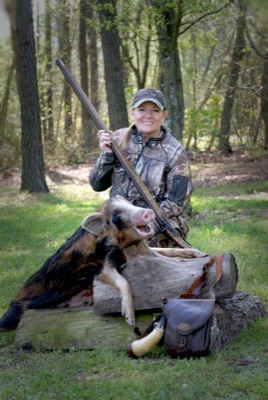Thursday, March 28th, 2013
Catching killers
Homicide cases grueling for small departments
By Shelley Grieshop
The last 16 months were unsettling for Mercer County Sheriff Jeff Grey.
Were murderers on the loose in the county? The question haunted him after the bodies of Robert and Colleen Grube were found slain in their rural Fort Recovery home on Nov. 29, 2011.
"I worried about it ... what if something else happens, what if someone else gets hurt? That was the most stressful part," he said. "It's my job to keep everybody safe."
Grey said it was a relief to find out that two suspects - both arrested earlier this week - were behind bars most of the time for unrelated crimes since the gruesome murders had occurred on Burrville Road.
The arrests of Bryant L. Rhoades, 22, and Trevin M. Sanders, 18, both of Union City, brought much satisfaction to Grey and his staff, but they know justice is yet to come.
"We look at it as we're at halftime," he said. "An arrest takes us to the next phase. The goal isn't an arrest, it's a conviction."
Grey said his detectives, U.S. Marshals and agents with the Bureau of Criminal Identification and Investigation worked long hours and never were without leads in the case.
"I never felt like it wasn't going to be solved," despite it's "cold case" classification and comments he heard from the public in recent months, he said. "We put everything we had into it."
Sgt. Doug Timmerman - the lead detective on the case - said the scene at the Grube farmhouse "was the worst thing I've ever seen in my life." He felt much empathy for the victims' family and drew strength from their courage, he said.
"I can't imagine being in their shoes," he added.
Timmerman stressed the investigation was a huge team effort. Neighboring sheriffs' offices frequently passed on tips they felt might be related to the double homicide, including one late last year from an Indiana agency that led to a huge break in the case.
He couldn't have gotten through it without support from his loved ones, he said.
"I missed a lot of birthday parties and soccer games, but my family always understood," Timmerman said.
He also credits detectives Megan Baker and Chad Fortkamp and the unrelenting support they received from Grey.
"The sheriff was never going to allow us to put this (case) on the shelf," he said.
When the pieces finally came together, the excitement was overwhelming, Timmerman said.
"I've had so many calls and texts from people wanting to congratulate us. Some of them I don't even know," he said.
Chief Deputy Allen Haueter of the Columbiana County Sheriff's Office in northeast Ohio understands the jubilation officers experience after making arrests in cold cases.
"It makes you just as high as if you were on drugs," he said.
Haueter said unsolved murders can eat at investigators who work feverishly to track down killers and bring closure to victims' families. Two months before the Grube murders, his office began searching for a missing farmer, Gerald G. Klusch, 71, of Lisbon. Several weeks later the man's body was found murdered in a rural, wooded area.
The case remains unsolved.
"We have a good suspect but lack the evidence to prosecute," Haueter said. "Our detectives moved on to other things, but we're keeping it open."
Like Mercer County, homicides are rare in Columbiana County, and residents don't always understand why some go unsolved, the 30-year sheriff's office veteran said.
Haueter believes the pressure to solve horrific cases is often worse on officers in small, farming communities such as Fort Recovery and Lisbon where nearly everyone knows the victims, their families and friends.
Haueter doesn't know Grey but has walked in his shoes and has a message for him and his staff.
"You deserve a big pat on the back," he said.
Ohio homicide data:
• Approximately 12 percent of all homicides in Ohio occur in small, rural communities and only about a third of those result in an arrest.
• Homicide arrests are rare in small towns and villages when the offender is unknown to the victim(s).
• The majority of Ohio's homicides involve suspects unknown to the victim(s).
• More than half the murders in the state involve guns and take place in private homes.
• In 2011 - the year Robert and Colleen Grube of Fort Recovery were murdered - more than 400 homicide cases were reported across the state. At least 45 of those deaths remain unsolved.
• More than 1,000 cases are listed in the Ohio Attorney General's Unsolved Homicides Database. Not all law enforcement agencies in Ohio have submitted their data.
• Ohio presently has an estimated 5,000 unsolved murders.
- Source: Ohio Incident-Based Reporting System


